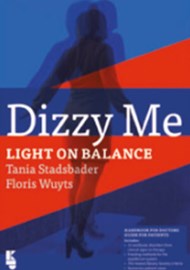This book is unlike any academic text I have read before. It was not at all what I was expecting; the book aspires to be a “handbook for doctors [and a] guide for patients” but certainly takes an innovative, if not somewhat unconventional, approach to this objective.
Stadsbader underwent canal plugging as a way of treating her recurring episodes of BPPV. She writes very candidly of her experiences, symptoms and recovery from her operation and how this impacted on her day-to-day life as a working mother. Overall this section was an interesting read and, to a budding audiologist or doctor, I think would be of value to get a taster of a patient’s very personal account of their dizziness journey. Admittedly there were times when I found some of the diary/blog entries rather repetitive, not relevant or possibly even lost in translation (the author is Belgian and her book has been translated) but perhaps I was not in the correct frame of mind having expected to be reading a more technical academic text.
The writing style of the first section takes the form of a diary-come-blog autobiographical account of Tania’s experience of her treatment for BPPV. In fact, Tania started an online blog to document her experiences of her BPPV and subsequently gained a number of followers. Some of these followers contributed to the final section of the book so there is certainly a wide, but perhaps overly-aligned, set of experiences discussed.
The mid-section of the book was written by Professor Floris Wuyts, a medical physicist specialising in dizziness, based at the ENT department of University Hospital Antwerp. Wuyts covered general anatomy and physiology of the vestibular system including testing, treatment, and research developments. Having personally just returned from maternity leave, I found this section to be useful as a nice little recap to help get my ‘baby brain’ back up to speed again. It covered the main vestibular complaints and I’m sure student audiologists and GPs would find this section a useful read.
The final section was a collection of ‘patient voices’; personal accounts of dizziness, diagnosis and treatment that were provided by people who had been in contact with Stadbader. There were a number of entries that were very damning to our profession including reports of misdiagnosis and the use of non-patient-friendly jargon causing frustration and anxiety for the individuals. Though uncomfortable to read at times, and only providing a one-sided account, it did highlight the importance of our duty of candor to our patients, to listen and to empathise.
Overall, if you are looking for a better appreciation of the true impact that dizziness can have on a person’s life then this book will definitely offer that insight. For patients who suffer from dizziness this book may reassure them that they are not alone in their experiences. However, for a practising professional, there are sections of the book that are somewhat heavy going and it detracts from what may have otherwise been an opportunity to learn and feel uplifted by a problem shared.




